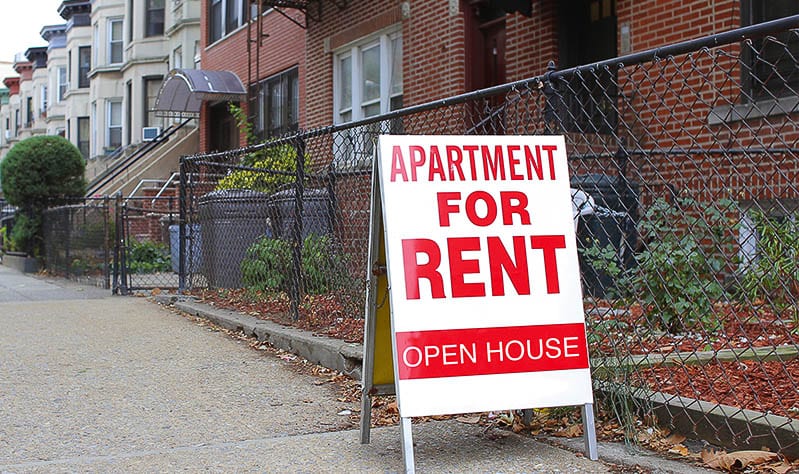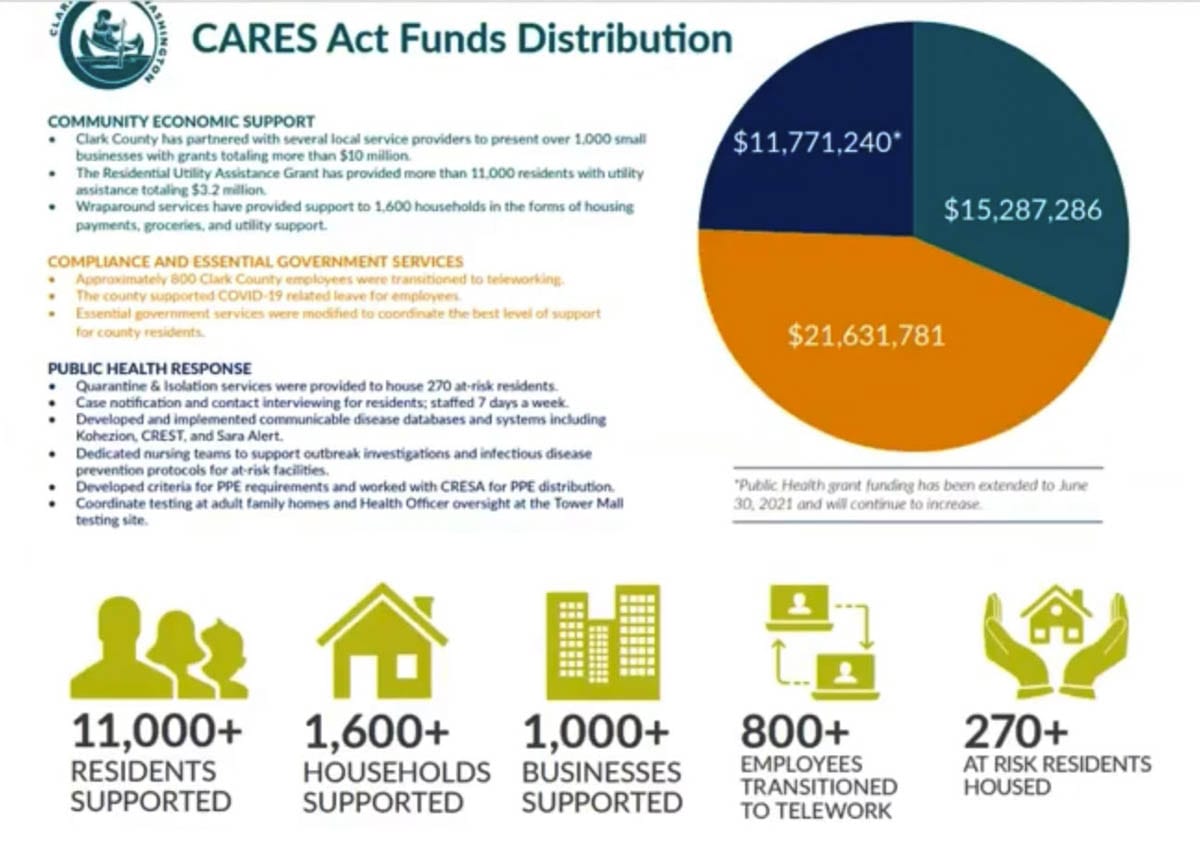The funding was part of $25 billion in the most recent coronavirus relief package aimed at helping to keep people from falling behind on rent
CLARK COUNTY — Since the start of the pandemic, Clark County has distributed almost $50 million in financial assistance, according to initial numbers compiled by Financial Director Mark Gassaway.
More than 1,000 businesses have received grants totaling more than $10 million, said Gassaway during a Council Time meeting on Wednesday. In addition, 11,000 people had received assistance with utility bills totaling more than $3.2 million.

“It is heartwarming,” said Gassaway, speaking of the comments they’ve received from people helped by the funding. “I only wish we had the ability to do more, because it has been so impactful in the lives of individuals and those businesses that the county has been able to support.”
Nearly 1,400 households have received rental assistance as well, totalling more than 5,000 months of rent, according to Michael Torres, the county’s Community Housing and Development manager.
Even so, that amount hasn’t been nearly enough.
“The original estimates [the Department of] Commerce gave us, based on our poverty rates, they thought about 8,000 households would need rental assistance,” said Torres.
Help may be on the way soon, though.
Gassaway and Torres were on Wednesday’s meeting mostly to seek permission from the council to apply for the county’s share of $25 billion in rental assistance funding as part of the most recent $900 billion coronavirus relief bill approved in December by Congress and ultimately signed by the president.
“Under this new stimulus, Clark County is now considered a direct recipient,” Gassaway told the council. “So we will no longer have to go through the state to receive our allocation for the new stimulus funds.”
Based on their calculations, Gassaway said Clark County would qualify for between $15 and $20 million in rental assistance funding directly from the US Department of Treasury.
Torres noted the funds would be available until Dec. 31 of this year, though 65 percent would need to be allocated by the end of September. Currently, the governor’s eviction moratorium continues through the end of March.
“Based on our experience with the state emergency rental assistance program last year,” said Torres, “we are very confident that it will be very easy to expend those funds well before the 31st of December.”
When the state approved $8 million of rental assistance funding on Aug. 24, 2020, Torres said, the funds had been exhausted by Dec. 30, and there were thousands more people on the waitlist.

Gassaway also noted that 55 percent of the total rental assistance funding would be going directly to the state, meaning Clark County could potentially qualify for additional help at the state level, depending on what the Department of Commerce decided to do with their portion.
The other important change with this funding is how it will be distributed.
“The landlord will be allowed to apply directly on behalf of the tenant,” Torres said, “which should make more people able to receive this assistance.”
Previously, tenants had to apply for the assistance, and then the money was distributed to the landlords to cover the rent.
Torres said anyone who qualifies for assistance will also need to re-apply every three months in order to ensure that they still qualify, though a six month cap that was part of the previous funding is gone.
One tricky aspect, Gassaway and Torres noted, is that the federal government is mandating that 90 percent of the funding go into the community, leaving 10 percent for administrative costs.
“Ten percent is usually very, very thin to operate with as it is, and that includes for any of the service providers that we use to distribute these funds,” said Torres. “So we’re going to be working really hard to identify how to do that.”
No timeline on the arrival of funding was available at Wednesday’s meeting, but Gassaway said they would be having more meetings with the Treasury Department this week, with the hope of announcing details in late January or early February.




